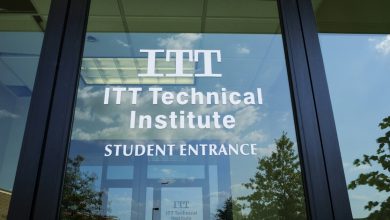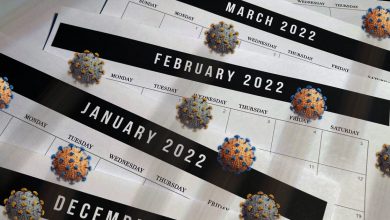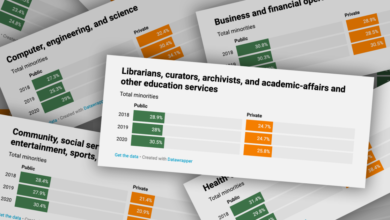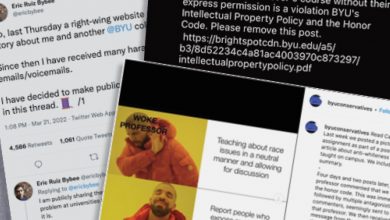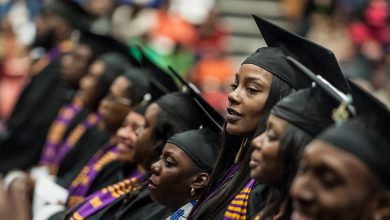For Native Students, the End of Race in Admissions Is Complicated
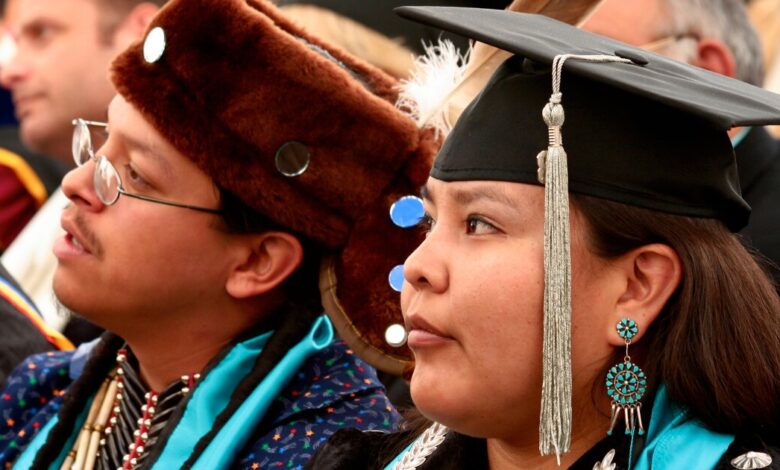
As a high-school student, Karen Guise was an overachiever.
Guise was born and raised on the Red Lake Nation Reservation, in Minnesota. In high school she earned a 4.3 grade-point average, served on the National Honor Society, became student-body president, participated in robotics, and played three sports.
Graduating from high school was an achievement in itself in Indian country, Guise said, and she was seen as a model student. Then the college rejections started piling up.
“I literally thought I was the perfect example with all the activities I did,” Guise said. “It was disheartening to get rejected from a lot of colleges.”
She believes race-conscious admissions helped her earn acceptance to the University of Minnesota-Twin Cities, where she’s now a rising sophomore studying political science. Her university’s free-tuition program targeted toward Native students helped her afford it.
We’re dealing with a lot of unknowns. We don’t know the full breadth of the impact of this ruling.
After the Supreme Court’s decision to overrule race-conscious admissions, Guise said she worries future Native students will struggle to get into college at all.
“Now that affirmative action is removed, a lot of Indigenous students’ applications are going to be bleak or very empty, compared to other people, because of issues and struggles that we go through as Indigenous people,” Guise said.
The Supreme Court struck down race-conscious admissions last month, saying that some colleges’ use of race as one factor in their decisions was discriminatory. The ruling has stoked widespread concern about declines in colleges’ diversity, with proponents of race-conscious policies arguing that they had leveled the playing field for students from less-privileged backgrounds.
At a moment when higher ed is scrambling to respond to a sea change, the potential impact on Native American students deserves particular attention, according to college administrators and experts on Indigenous education.
It’s just another hurdle that brings Native students further from higher education.
Affirmative action began decades ago as a remedy for historical wrongs. Across higher ed’s history, colleges have acted in ways that have harmed Native American people. The 1862 Morrill Act gave states seized Indigenous land to build universities on, creating land-grant colleges.
To this day, a number of universities hold thousands of Native remains and artifacts in their anthropological museums, despite a 1990 federal law — the Native American Graves Protection and Repatriation Act — that mandates their return.
Native students’ path to college is filled with obstacles. From 2011 to 2021, their enrollment has dropped by 33 percent nationwide, according to Chronicle data.
Then there’s a complicating factor: Native identity is multifaceted. Native students are typically defined by colleges as members of an underrepresented-minority group, along with Black and Latino students — the kinds of students who got a boost from affirmative action. But being Native American isn’t just a race; it’s a marker of tribal citizenship.
Colleges must figure out how to consider Native students in this new era.
Looming Uncertainty
Though most colleges weren’t using race in admissions to begin with, the court’s decision could send a chilling message to Native students, experts told The Chronicle, hurting enrollment among people in an identity group that’s already less likely to go to college.
Native students not only struggle with affording college and feeling a sense of belonging; they also are the smallest population of high-school graduates and contend with systemic barriers to educational access that are rooted in historical atrocities.
In a statement, the American Indian College Fund described concern that the court’s decision would “impinge on the equitable access to affordable education” for Native students.
“We refuse to let this decision reverse decades of progress in education achievement which has benefited talented and accomplished Native students and other diverse students with the opportunity for an affordable higher education,” the statement says.
Still, the actual impact of the ruling isn’t clear-cut. Cheryl Crazy Bull, president and chief executive officer of the American Indian College Fund and a member of the Sicangu Lakota Nation, said she’s not sure if race-conscious admissions policies really supported Native students in the first place.
She fears that certain scholarships will be under attack, which could threaten much-needed financial aid for Native students. Several colleges have already announced plans to drop the consideration of race in awarding scholarships.
“We’re dealing with a lot of unknowns,” Crazy Bull said. “We don’t know the full breadth of the impact of this ruling. So that’s unknown, but it’s a fear.”
Educators like Cibonet Salazar, the program manager at the Center for Native American Indigenous Studies at the University of Colorado at Boulder, said the elimination of race-conscious admissions would only add more barriers for Native students.
“It’s just another hurdle that brings Native students further from higher education,” she said.
Salazar, an enrolled member of the Taos Pueblo and a member of the Santa Ana Pueblo, said the admissions process should be used to diversify a campus — to allow students to share their unique identities.
“All of us have even more complex identities with being Native American,” Salazar said. “There’s a lot to bring to the table there. I just don’t know how universities are going to work around that.”
Possible Solutions
In the near term, colleges will also have to sort through tricky questions about what it means to be Native American.
Native identity also can qualify as a sovereign political identity, said Phenocia Bauerle, who is Crow and serves as director of Native American student development at the University of California at Berkeley. That is due to federally recognized membership in a tribe.
In California, race-conscious admissions have been banned since 1998. Since then, public colleges in the state have created programs to recruit and retain Native students — like the University of California system’s Native American Opportunity Plan, which offers free tuition for Native students in federally recognized tribes.
For the UC system, admitting those Native students is not a race-based decision.
But even that strategy has pitfalls, Bauerle said. Some Native students in California belong to tribes that are not federally recognized, eliminating any type of political status.
“Federal recognition is a real fine line,” Bauerle said. “Across the country, there are tribes who are not federally recognized … so it’s something that needs to be worked through. It does leave a lot of holes in terms of how that serves that population.”
In addition to the free-tuition plan, the UC system’s admissions offices use a holistic review in which applicants are considered in the context of their geographical location, Bauerle said. That ensures consideration of Native students from reservations, urban areas, and suburban communities.
With possible enrollment drops on the horizon, David Hawkins, chief education and policy officer at the National Association for College Admission Counseling, said outreach to Native students would be vital. That includes visiting tribal high schools and collaborating with Native communities and organizations.
“Our fear about what could happen extends to them because of past data,” Hawkins said. “With respect to the Native population, making sure that we get to schools that serve any population of Native American students … that effort is going to have to be very intentional.”
As with Black students and children of immigrants, Bauerle said, Indigenous people are still subject to institutional racism, especially in education.
With the Supreme Court’s decision, Guise said she worries that a college degree will be even more elusive for Native students.
“Not all of us have a college education, so now that affirmative action is gone, it’s definitely going to be more difficult,” she said. “I feel like the system is making it difficult for people of color, especially Indigenous people, to get into college.”
Source link


